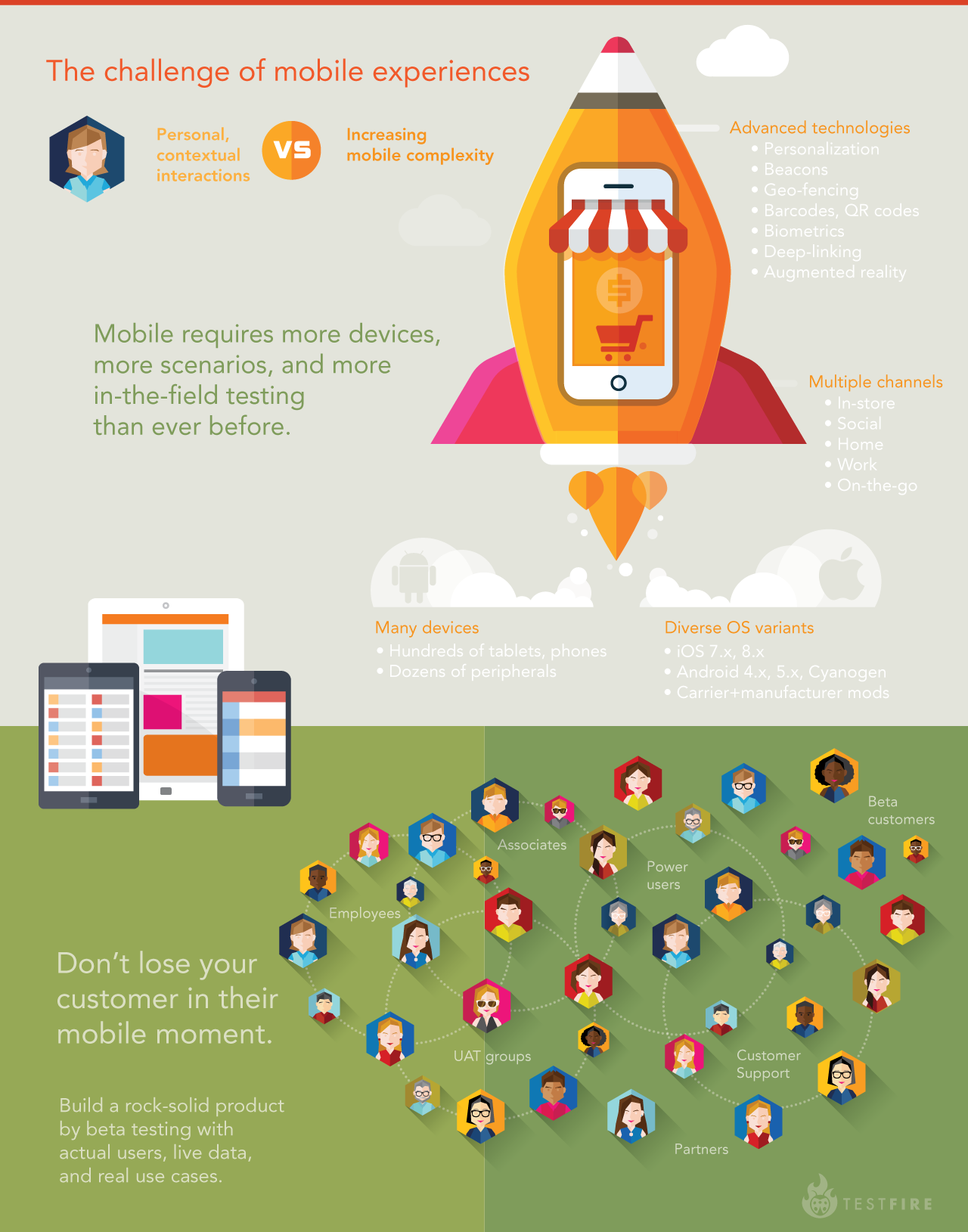The Challenge of Mobile Experiences
Mobile apps are supposed to deliver a great experience in the moment. It’s not just a best practice, it’s mission critical.
“The mobile mind shift is the expectation that your customer can get what she wants in her immediate context and moments of need. This shift means the battle for your customer’s attention will be waged in mobile moments — any time she pulls out a mobile device” (Re-Engineer Your Business For Mobile Moments, Forrester Research, Inc., Jan. 24, 2014).
Mobile moments are the playground in which your app needs to operate. You literally have seconds to engage and retain a customer in their moment of need. So although you may have spent lots of time, energy, and money designing and building your app, if it doesn’t work in the moment, it’s going to be deleted or forgotten.
It’s a user’s market for apps:
- 1 in 5 apps are only used once and then deleted
- 62% of users immediately delete buggy/crashy/slow performing apps
The challenge with mobile is that companies must deliver personal, contextualized experiences against a backdrop of hundreds of phones and tablets, constant OS updates, multiple channels, and complex interactions.
Most companies have a process that looks like this:
Design – Develop – QA – Launch
Real users under real conditions is what’s missing in the testing cycle, because if your app is not rock solid, you will lose your customer in their mobile moment. The problem with just an internal QA step is that increasing mobile complexity is often outpacing the QA team’s ability to adequately test an app.
Google, Facebook, Twitter, Uber- all have extensive employee dogfooding and beta programs that they support and manage. So why not use your employees and beta users to help test your app. The best companies in the world do.
Beta customers (aka users) and employees are an amazing resource. They are the audience that can help you deliver apps that will actually perform well in production scenarios. As real users with live data, actual use cases and tasks they want to accomplish, they can help explore the boundaries of your app.
Dogfooding and beta testing are the missing link in most mobile app development cycles.
Although dogfooding and beta testing are essential for any company developing a mobile app, these steps are often overlooked due to short timelines, budget and resource constraints. Instead of asking “can we afford to do this?”, the question should be “can we afford not to do this?” What is the penalty for having a poor performing or buggy app?
- Reputational damage for your brand, not only by that individual customer but also their influence to build buzz around the app and in app store ratings, Twitter and Facebook.
- Removal of your app and the loss of any future opportunity to engage – what are the chances they will download your app a second time after they delete it?
- Loss of customers to a competitor
So before your launch your next app or your latest version, consider pushing it outside the boundaries of your product team, and engage more users in your testing process.
Infographic: The Challenge of Mobile Experiences:







